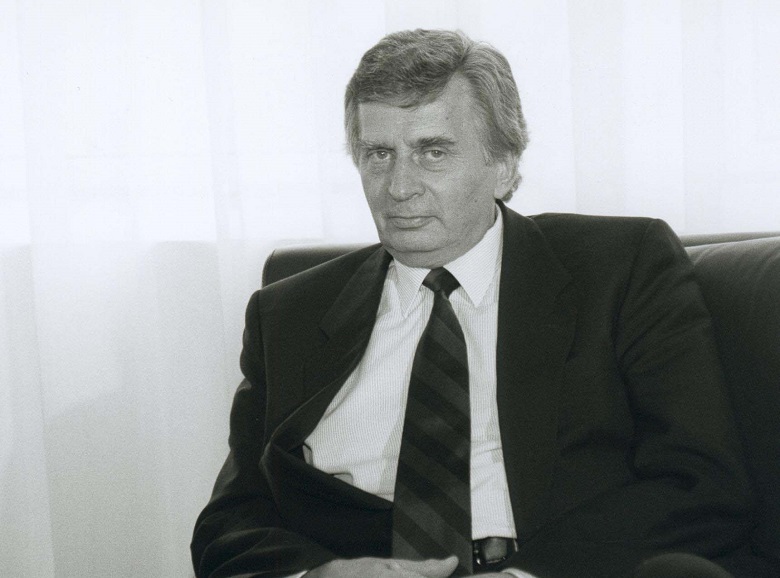A legendary figure in the unification of Europe and the fight for democracy
Although Parliament’s eight-storey József Antall building has been in use since 2008, it was only in March 2009 that it was actually named after him. A circular aerial walkway (the ‘Skywalk’) links it to the Altiero Spinelli and Willy Brandt buildings. It is therefore one of the three buildings around the Esplanade ‘Solidarność 1980’, in the heart of the Brussels European Quarter. József Antall’s role in European integration is perhaps not quite so well known as that of other prominent European statesmen. A Hungarian statesman, teacher, librarian and historian, he was the first person to head his country’s government after the restoration of democracy on 23 May 1990.
He was born in 1932 in Budapest into a family with strong democratic convictions and a history of involvement in politics. At one time or another, his father, maternal grandfather and brother-in-law all pursued similar careers. But it was his father who initiated him into public life and passed on to him his taste for politics. In particular, he imbued him with his commitment to representative democracy, patriotism and Christian moral values.
Swimming against the tide politically
At the age of 16, József Antall dreamed of becoming a writer and a politician. The Communist takeover in 1949 did nothing to persuade him to renounce this ambition. He was convinced that the Communist system was inhuman and doomed to failure. At university, where he studied literature, József Antall was more harshly confronted by Communist ideology. After graduation, he became a librarian and started his career in the National Archives, before teaching at a grammar school from 1955 onwards. He came under fire from the regime because of the political ideas that he espoused. In 1959, he was suspended and prohibited from teaching because he was demanding pluralism, the withdrawal of Soviet troops from the country and independence for Hungary. However, he then managed to secure a post in scientific research, which enabled him to establish a reputation and become director of the Institute for the History of Medicine.
 József Antall, Prime Minister of Hungary at the EP in Strasbourg © European Union 1991 – European Parliament
József Antall, Prime Minister of Hungary at the EP in Strasbourg © European Union 1991 – European Parliament
A return to his original vocation
After several years away from politics, he returned to that arena in the 1980s, joining the political protest movement. He quickly realised that he would not be able to achieve great things in the company of the minority parties involved. He refused a number of positions of responsibility, as his outlook was more ambitious. He was convinced that only a centre-right movement, based on a broad coalition, would be able to overcome the left and the liberals. That is therefore what he sought to found.
A new political force field was now established. József Antall had the advantage of being familiar with the functioning of European democracies. That enabled him to propose a compromise whenever necessary to avert disunity and to rescue negotiations in order to oppose the Communist Party.
In 1989, on behalf of the Hungarian Democratic Forum, he led the political negotiations with the Communist Government of Hungary, which, on 23 October, led to the adoption of a democratic constitution.
By opening its border with Austria to refugees from East Germany, Hungary played an important role in the fall of the Iron Curtain. The following year, Antall was elected Prime Minister, the first democratically elected PM after that country’s emergence from under the Soviet yoke. Thus he managed the country’s transition to a market economy and liberal democracy. He played a part in the dissolution of the Warsaw Pact in 1990, and committed his country to membership of the European Union and NATO. In 1990, Hungary was admitted to the Council of Europe. A year later, the country signed an Association Agreement with the EU, and in 2004 it became a full member of the EU.